Economy
After 140-Odd Years, Can’t We Figure Rail Out Yet?

From the Frontier Centre for Public Policy
A typical train these days has over 100 cars. Each rail car, depending on the load, is at least one, and often several truckloads. A train needs two crew to operate it. Are you going to come up with 100 to 200 truck drivers to replace that one, individual train, as well as the trucks, trailers, and space on the highways in a moment’s notice, and then do that for the entire economy?
In all the fuss about the Canadian rail disruption, one thing jumped out at me. Here’s how the National Post reported it:
“Despite the economic impacts, the Canadian Industrial Relations Board ruled earlier this month that the railway workers are not an essential service.”
Every member of this board should be sacked. Immediately. Because if rail is not essential, nothing is.
Did none of them pay attention in grade school? Canada was built on the railway. British Columbia joined confederation as a result, and all the gaps in between were filled in in large part because there was rail.
Yet every few years, Canadians and the Canadian economy is held hostage by some sort of disruption involving rail, usually a labour one, but occasionally a protest movement or even the weather, as if this is our first year living in the great white north.
The playbook is worn out already. After several days of pain and homage being paid to the rights of the workers to strike (yet no one talks about the rights of companies to lock out workers), the federal government eventually takes action and things get back to normal.
In this case, the feds let the entire rail network of CN and CPKC shut down on Thursday, Aug. 22, before ordering binding arbitration. But as I write this the morning of Friday, Aug. 23, the Teamsters have served strike notice on CN about an hour ago. I’m not going to try to keep up with all the developments. Maybe by the time this is published, it will all be resolved. But it seemed like that resolution was yesterday, and it fell apart today, so who knows?
And frankly, I don’t care, and I don’t think you should, either. Perhaps the union members have a point in their issues. Maybe the rail companies do, too. Fundamentally, it doesn’t matter. Sort it out. Put on you big boy/girl shorts/panties. Make it work.
At no point, ever, in the history of this nation, has rail service not been essential. From farmers needing to ship their grain at harvest to cities needing chlorine for water treatment to pavers needing asphalt from the Lloydminster refinery before the fall paving season ends, rail is utterly critical to our existence as a nation.
And anyone who says we can just backfill with trucks is a fool. A typical train these days has over 100 cars. Each rail car, depending on the load, is at least one, and often several truckloads. A train needs two crew to operate it. Are you going to come up with 100 to 200 truck drivers to replace that one, individual train, as well as the trucks, trailers, and space on the highways in a moment’s notice, and then do that for the entire economy?
Let’s look back at the rail blockades of 2020 in support of the Wet’suwet’en opposition to the Coastal GasLink pipeline. Because the blockades were related to First Nations politics, the federal Liberal government was loathe to step in. In a nod to George Orwell’s Animal Farm, it proved that in the 21st century, “some animals are more equal than others.” In this case, some First Nations were more equal than others, and could block rail lines at will, dramatically impacting parts of the economy. Never mind that the pipeline that was so ardently opposed is now the salvation for other First Nations bands to go ahead with their own Cedar LNG facility, dramatically improving their economic prospects.
Did the government perhaps learn something from the 2020 blockades – that rail disruption can’t allow these things to go on forever, especially because it would now impact the entire economy? Maybe. But if so, maybe the federal minister should have acted before an actual stoppage took place.
And that’s the key thing. Rail is nothing new to Canada. It’s almost as old as the nation itself. And yet there’s always something causing grief. Sometimes rail performance is blamed on snow in the mountains, or cold, as if this is the first time there’s ever been cold, or snow, or both, in Canada. Except they made it work for over 140-odd years, why are we now unable to make things work? Why, after the same 140-odd years of operation, we still have labour strife over rest periods and operations? Hasn’t that been enough time to figure it out, both from the company and labour sides?
How many more decades, nay, centuries do we need to figure out how to run a railroad?
Brian Zinchuk is editor and owner of Pipeline Online, and occasional contributor to the Frontier Centre for Public Policy. He can be reached at [email protected].
2025 Federal Election
The High Cost Of Continued Western Canadian Alienation
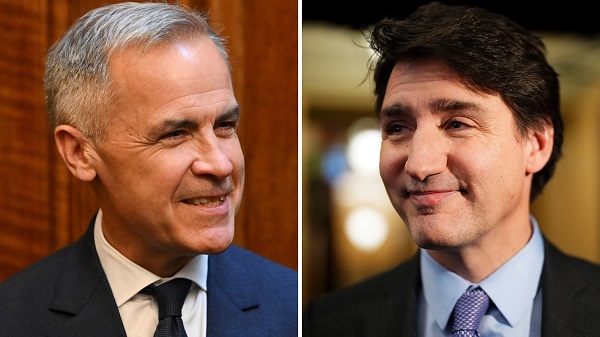
From EnergyNow.Ca
By Jim Warren
Energy Issues Carney Must Commit to if He Truly Cares About National Cohesion and be Different From Trudeau
If the stars fail to align in the majority of Western Canada’s favour and voters from Central Canada and the Maritimes re-elect a Liberal government on April 28, it will stand as a tragic rejection of the aspirations of the oil producing provinces and a threat to national cohesion.
As of today Mark Carney has not clearly and unequivocally promised to tear down the Liberal policy wall blocking growth in oil and gas exports. Yes, he recently claimed to favour energy corridors, but just two weeks earlier he backtracked on a similar commitment.
There are some promises Carney hopefully won’t honour. He has pledged to impose punitive emissions taxes on Canadian industry. But that’s supposedly alright because Carney has liberally sprinkled that promise with pixie dust. This will magically ensure any associated increases in the cost of living will disappear. Liberal wizardry will similarly vaporize any harm Carbon Tax 2.0 might do to the competitive capacity of Canadian exporters.
Carney has as also promised to impose border taxes on imports from countries that lack the Liberals’ zeal for saving the planet. These are not supposed to raise Canadians’ cost of living by much, but if they do we can take pride in doing our part to save the planet. We can feel good about ourselves while shopping for groceries we can’t afford to buy.
There is ample bad news in what Carney has promised to do. No less disturbing is what he has not agreed to do. Oil and gas sector leaders have been telling Carney what needs to be done, but that doesn’t mean he’s been listening.
The Build Canada Now action plan announced last week by western energy industry leaders lays out a concise five-point plan for growing the oil and gas sector. If Mark Carney wants to convince his more skeptical detractors that he is truly concerned about Canadian prosperity, he should consider getting a tattoo that celebrates the five points.
Yet, if he got onside with the five points and could be trusted, would it not be a step in the right direction? Sure, but it would also be great if unicorns were real.
The purpose of the Build Canada Now action plan couldn’t be much more clearly and concisely stated. “For the oil and natural gas sector to expand and energy infrastructure to be built, Canada’s federal political leaders can create an environment that will:
1. Simplify regulation. The federal government’s Impact Assessment Act and West Coast tanker ban are impeding development and need to be overhauled and simplified. Regulatory processes need to be streamlined, and decisions need to withstand judicial challenges.
2. Commit to firm deadlines for project approvals. The federal government needs to reduce regulatory timelines so that major projects are approved within 6 months of application.
3. Grow production. The federal government’s unlegislated cap on emissions must be eliminated to allow the sector to reach its full potential.
4. Attract investment. The federal carbon levy on large emitters is not globally cost competitive and should be repealed to allow provincial governments to set more suitable carbon regulations.
5. Incent Indigenous co-investment opportunities. The federal government needs to provide Indigenous loan guarantees at scale so industry may create infrastructure ownership opportunities to increase prosperity for communities and to ensure that Indigenous communities benefit from development.”
As they say the devil is often in the details. But it would be an error to complicate the message with too much detail in the context of an election campaign. We want to avoid sacrificing the good on behalf of the perfect. The plan needs to be readily understandable to voters and the media. We live in the age of the ten second sound bite so the plan has to be something that can be communicated succinctly.
Nevertheless, there is much more to be done. If Carney hopes to feel welcome in large sections of the west he needs to back away from many of promises he’s already made. And there are many Liberal policies besides Bill C-69 and C-48 that need to be rescinded or significantly modified.
Liberal imposed limitations on free speech have to go. In a free society publicizing the improvements oil and gas companies are making on behalf of environmental protection should not be a crime.
There is a morass of emissions reduction regulations, mandates, targets and deadlines that need to be rethought and/or rescinded. These include measures like the emissions cap, the clean electricity standard, EV mandates and carbon taxes. Similarly, plans for imposing restrictions on industries besides oil and gas, such as agriculture, need to be dropped. These include mandatory reductions in the use of nitrogen fertilizer and attacks (thus far only rhetorical) on cattle ranching.
A good starting point for addressing these issues would be meaningful federal-provincial negotiations. But that won’t work if the Liberals allow Quebec to veto energy projects that are in the national interest. If Quebec insists on being obstructive, the producing provinces in the west will insist that its equalization welfare be reduced or cancelled.
Virtually all of the Liberal policy measures noted above are inflationary and reduce the profitability and competitive capacity of our exporters. Adding to Canada’s already high cost of living on behalf of overly zealous, unachievable emissions reduction goals is unnecessary as well as socially unacceptable.
We probably all have our own policy change preferences. One of my personal favourites would require the federal government to cease funding environmental organizations that disrupt energy projects with unlawful protests and file frivolous slap suits to block pipelines.
Admittedly, it is a rare thing to have all of one’s policy preferences satisfied in a democracy. And it is wise to stick to a short wish list during a federal election campaign. Putting some of the foregoing issues on the back burner is okay provided we don’t forget them there.
But what if few or any of the oil and gas producing provinces’ demands are accepted by Carney and he still manages to become prime minister?
We are currently confronted by a dangerous level of geopolitical uncertainty. The prospects of a global trade war and its effects on an export-reliant country like Canada are daunting to say the least.
Dividing the country further by once again stifling the legitimate aspirations of the majority of people in Alberta and Saskatchewan will not be helpful. (I could add voters from the northeast and interior of B.C., and southwestern Manitoba to the club of the seriously disgruntled.)
Economy
Clearing the Path: Why Canada Needs Energy Corridors to Compete
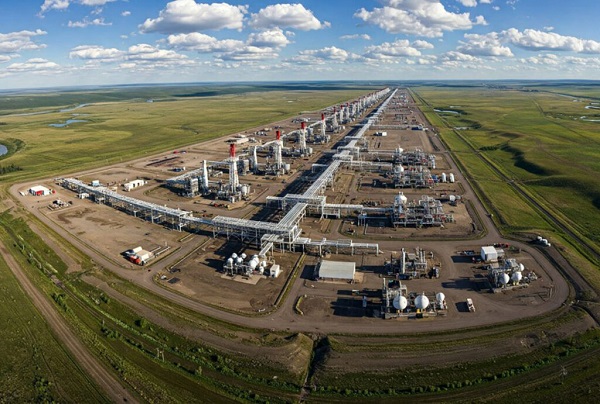
From Energy Now
Originally published by Canada Powered by Women
-
Keystone XL ($8 billion), cancelled in 2021
-
Energy East ($15.7 billion), cancelled in 2017
-
Northern Gateway ($7.9 billion), cancelled in 2016
These projects were cancelled due to regulatory challenges, environmental opposition, and shifting political decisions on both sides of the border. This left Canada without key infrastructure to support energy exports.
For years, companies have tried to build the infrastructure needed to move Canadian oil and gas across the country and to sell to global markets. Billions of dollars have been invested in projects that never materialized, stuck in regulatory limbo, weighed down by delays, or cancelled altogether.
The urgency of this issue is growing.
Last week, 14 CEOs from Canada’s largest pipeline and energy companies issued an open letter urging federal leaders from all parties to streamline regulations and establish energy corridors, warning that delays and policy uncertainty are driving away investment and weakening Canada’s position in global energy markets.
The U.S. recently imposed tariffs on Canadian energy, adding new pressure to an already lopsided trade relationship. According to the 2024-2025 Energy Fact Book from Natural Resources Canada, the U.S. accounted for 89% of Canada’s energy exports by value, totalling $177.3 billion. This leaves the economy vulnerable to shifts in American policy. Expanding access to other buyers, such as Japan, Germany, and Greece, would help stabilize and grow the economy, support jobs, and reduce reliance on a single trading partner.
At the heart of this challenge is infrastructure.
Without reliable, efficient ways to move energy, Canada’s ability to compete is limited. Our existing pipelines run north-south, primarily serving the U.S., but we lack the east-west capacity needed to supply our own country and to diversify exports. Energy corridors (pre-approved routes for major projects) would ensure critical infrastructure is built fast, helping Canada generate revenue from its own resources while lowering costs and attracting investment.
This matters for affordability and reliability.
Our research shows engaged women are paying close attention to how energy policies affect their daily lives — 85 per cent say energy costs impact their standard of living, and 77 per cent support the development and export of liquefied natural gas (LNG) to help provide energy security and to generate revenue for Canada.
With increasing concern over household expenses, food prices, and economic uncertainty, energy corridors have become part of the conversation about ensuring long-term prosperity.
What are energy corridors, and why do they matter?
Energy corridors are designated routes for energy infrastructure such as pipelines, power lines, and transmission projects. With an energy corridor, environmental assessments and stakeholder consultations are completed in advance, allowing development to proceed without ongoing regulatory hurdles which can become costly and time consuming. This provides certainty for energy projects, reducing delays, lowering costs, and encouraging investment. They are also not a new concept and are applied in other parts of the world including the U.S.
In Canada, however, this isn’t happening.
Instead, each project must go through an extensive regulatory process, even if similar projects have already been approved. Energy companies spend years trying to secure approvals that don’t come to fruition in a reasonable time and as a result projects are cancelled due to sky-rocketing costs.
“Getting regulatory approval for energy transportation projects in Canada takes so long that investors are increasingly looking elsewhere,” said Krystle Wittevrongel, director of research at the Montreal Economic Institute. “Energy corridors could help streamline the process and bring back much-needed investment to our energy industry.”

Jackie Forrest, executive director at the ARC Energy Research Institute, pointed out that the time it takes to get projects approved is a major factor in driving investment away from Canada to other countries.
“Projects are taking five or more years to go through their regulatory review process, spending hundreds of millions if not a billion dollars to do things like environmental assessments and studies that sometimes need to be carried out over numerous seasons,” she said.
The cost of missed projects
Over the past decade, multiple major energy projects in Canada have been cancelled or abandoned. Among them:
- Keystone XL ($8 billion), cancelled in 2021
- Energy East ($15.7 billion), cancelled in 2017
- Northern Gateway ($7.9 billion), cancelled in 2016
These projects were cancelled due to regulatory challenges, environmental opposition, and shifting political decisions on both sides of the border. This left Canada without key infrastructure to support energy exports.
LNG projects have faced similar setbacks. More than a dozen LNG export proposals were once on the table, but these same issues made most of these projects not viable.
Meanwhile, the United States rapidly expanded its LNG sector, now exporting far more than Canada, capturing global markets that Canada could have served.
“Ten to 15 years ago, there were about as many LNG projects proposed in Canada as in the U.S.,” said Forrest. “We have not been able to get those projects going. The first Canadian project is just starting up now, while the Americans are already shipping out far more.”
She cited a report that shows LNG development in the U.S. has added $408 billion to GDP since 2016 and created 270,000 direct jobs.
“That’s a major economic impact,” she said. “And Canada hasn’t been able to take part in it.”
The case for energy corridors: Creating prosperity, keeping costs in check
Energy corridors could help Canada build long-term prosperity while addressing affordability, job creation, and energy reliability.
“More efficient infrastructure reduces supply chain delays, helping to lower consumer energy costs and related expenses like food and transportation,” said Wittevrongel.
Wittevrongel notes that projects that cross provincial borders face both provincial and federal impact assessments which leads to duplication of effort and delays. Reducing this overlap would shorten approval timelines and provide more certainty for investors.
“One of the ways to improve this process is having the federal government recognize provincial environmental assessments as being good enough,” she said. “There has to be a way to balance that.”
Forrest said investors have already taken note of Canada’s high project costs and long approval timelines.
“TC Energy just built a pipeline to connect the BC gas fields with the West Coast that cost about twice as much as originally expected and took a lot longer,” she said. “Meanwhile, they recently completed a $4.5-billion natural gas project in Mexico under budget and ahead of schedule. Now they’re looking at where to put their next investment.”
Forrest explained that energy corridors could help de-risk infrastructure projects by front-loading environmental and stakeholder work.
“If we just had a pre-approved corridor for things like pipelines and transmission lines to go through, where a lot of this groundwork had already been done, it would really reduce the timeline to get to construction and reduce the risk,” she said. “That would hopefully get a lot more capital spent more quickly in this country.”

The path forward
Without changes, investment will continue to flow elsewhere.
“Energy corridors can go a long way to restoring Canada’s attractiveness for energy transportation and infrastructure projects as it cuts down on the lengthy bureaucratic requirements,” said Wittevrongel.
And Forrest agrees.
“We need to pick key projects that are going to be important to the sovereignty and economic future of Canada and get them done,” Forrest said. “I don’t think we can wait for long-term legislative reform — we need to look at what the Americans are doing and do something similar here.”
Energy corridors are about ensuring Canada remains competitive, lowering costs for consumers, and creating the infrastructure needed to support long-term economic prosperity.
For engaged women, this translates into a stronger economy, lower costs, and more reliable energy for their families.
“The two areas that this will be felt for every family are in lower energy costs and also in lower grocery or food prices as transportation of these things becomes easier on rail, or exporting grain reduces the price, for instance, ” said Wittevrongel.
Whether policymakers take action remains to be seen, but with growing trade pressures and investment uncertainty, the conversation around energy corridors is needed now more than ever.
-
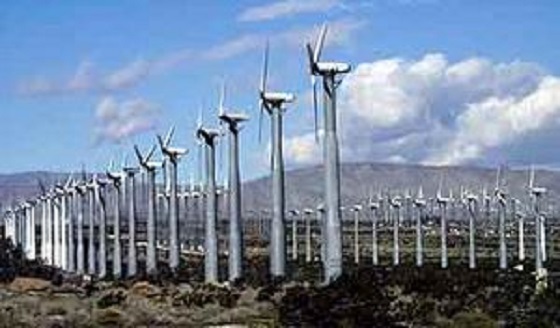
 Business2 days ago
Business2 days ago28 energy leaders call for eliminating ALL energy subsidies—even ones they benefit from
-
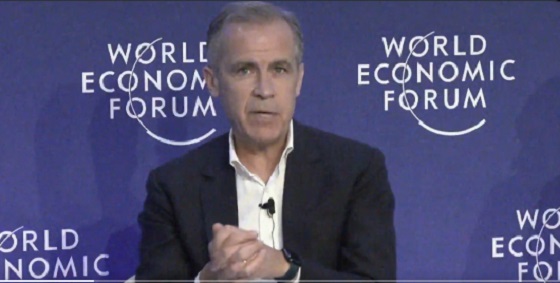
 2025 Federal Election2 days ago
2025 Federal Election2 days agoCarney’s Cap on Alberta Energy Costing Canada Billions
-
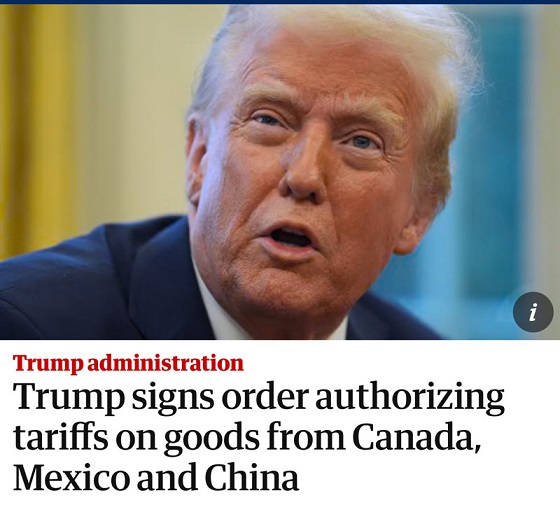
 Business2 days ago
Business2 days agoTrump Tariffs are not going away. Canada needs to adapt or face the consequences
-

 Health2 days ago
Health2 days agoDr. Pierre Kory Exposes the Truth About the Texas ‘Measles Death’ Hoax
-
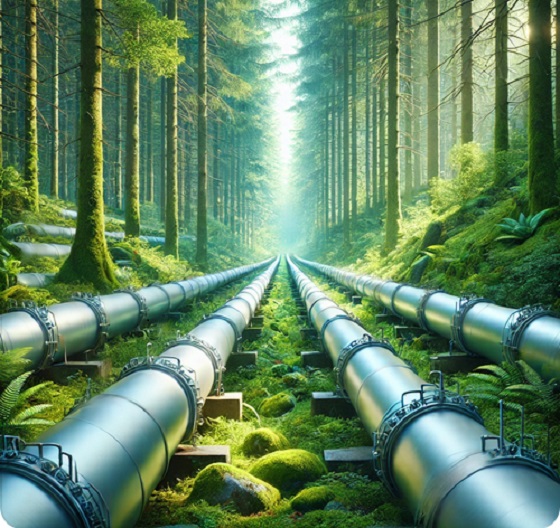
 Economy2 days ago
Economy2 days agoSupport For National Pipelines And LNG Projects Gain Momentum, Even In Quebec
-

 Business22 hours ago
Business22 hours agoDOGE discovered $330M in Small Business loans awarded to children under 11
-
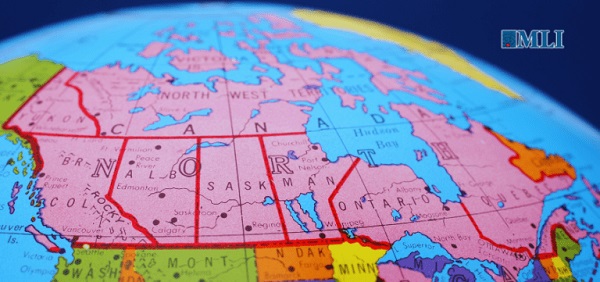
 Business2 days ago
Business2 days agoWhy a domestic economy upgrade trumps diversification
-

 COVID-1920 hours ago
COVID-1920 hours ago17-year-old died after taking COVID shot, but Ontario judge denies his family’s liability claim

